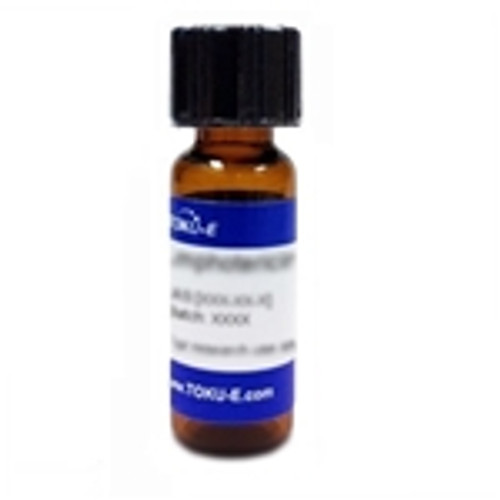Phloroglucinol (syn: 1,3,5-trihydroxybenzene) is an organic biochemical. It is the core structure of a large family of substituted phenolics with broad, albeit weak, biological activity. Phloroglucinol is a useful metabolite for HPLC/DAD and bioassay dereplication. It can also be used in ion-exchange and gas adsorption. It was synthsized from phloretin by Henrich Hlasiwetz in 1855 however modern synthesis involves hydrolysis of benzene-1,3,5-triamine and its derivatives.
Phloroglucinol is soluble in ethanol, methanol, DMF or DMSO. Moderate water solubility.
| Mechanism of Action | Phloroglucinol enhances the activity of cellular catalases thus has cryoprotective effect from oxidative damage. Upon reaction with benzaldehyde derivatives it can form phloroglucinol-based microporous polymeric organic frameworks (phlo-POF) with potential applications in ion-exchange and gas adsorption. |
| General Applications |
Phloroglucinol can be used for microscopy, to decalcify bone specimens. |
| Plant Biology Applications |
Phloroglucinol has been shown to induce and enhance root formation by acting as an auxin syngergist or protector. It can also be used in histology to stain plant sections. As a degradation prdouct of phloridzin, has growth-promoting properties. It can induce shoot formation and somatic embryogenesis in several grain and horticultural crops. As a precursor to the lignin biosynthesis pathway, it can control hyperhydricity via lignification, so the multiplication rate of woody species, or species that are difficult to propagate, are maximized. Phloroglucinol, together in solution with hydrochloric acid, is used in the Weisner test, to detect lignin. A brilliant red color develops due to the presence of coniferaldehyde groups in the lignin. |
| Eukaryotic Cell Culture Applications | Phloroglucinol can protect lung fibroblast cells (V79-4 Chinese hamster) from oxidative stress. |
| Cancer Applications | Phloroglucinol can induce apoptosis in HT-29 human colon cancer cells. It can inhibit metastasis of BT549 and MDA-MB-231 human breast cancer cells. |
| References |
Kang MH, Kim IH and Nam TJ (2014) Phloroglucinol induces apoptosis through the regulation of insulin-like growth factor 1 receptor signaling pathways in human colon cancer HT-29 cells. Int. J. Oncol. 45(3):1036-1042 Singh IP and Bharate SB (2006) Phloroglucinol compounds of natural origin. Nat. Prod. Rep. 23:558 Singh IP, Sidana J and Bharate SB et al (2010) Phloroglucinol compounds of natural origin: Synthetic aspects. Nat. Prod. Rep. 27(3): 393-416 Teixeira da Silva JA, Dobránszki J and Ross S (2013) Phloroglucinol in plant tissue culture. In Vitro Cell.Dev.Biol.-Plant 49:1-16 Wang Y and Pijut PM (2014) Improvement of Agrobacterium-mediated transformation and rooting of black cherry. In Vitro Cell. Dev. Biol- Plant. 50(3):307-316 |



